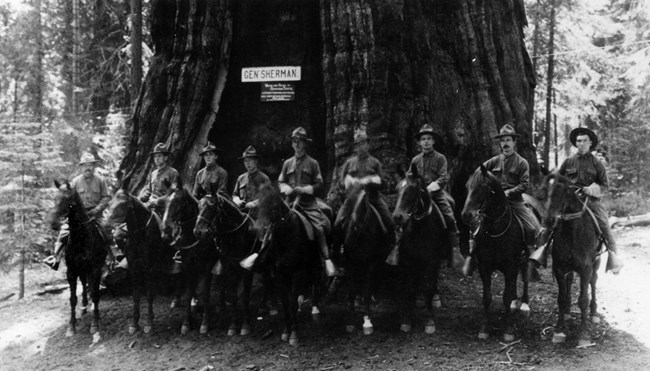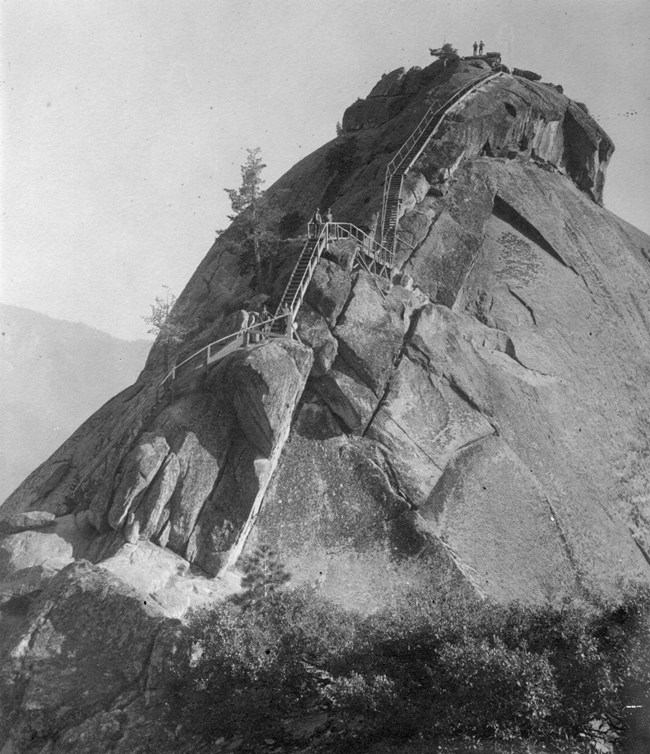
Historic People and Places of the Parks
Read a series of essays that explores the who's and where's of the southern Sierra Nevada.
A Look Into the PastIndigenous Peoples in the Early YearsThe Sierra Nevada mountain range contains some of the oldest national parks in the nation. These parks occupy spectacular volcanic and glacial landforms, as well as distinctive subalpine and alpine habitats, setting these parklands apart from the wider landscape of central and southern California. The location’s uniqueness has made it especially important to Native Americans as well.Sequoia and Kings Canyon National Parks are the homelands of the Mono (Monache), Yokuts, Tübatulabal, Paiute, and Western Shoshone. Native peoples have used, tended, occupied, and valued the lands of the high Sierras in many ways, and they still maintain deep connections to the parks today. 
Henry E. Roberts America's Second National Park (1890)On September 25th, 1890, President Benjamin Harrison signed legislation establishing the second national park in America – Sequoia National Park. Created to protect giant sequoia trees from logging, this national park was the first formed specifically to protect a living organism. 
NPS Photo The First Rangers (1891-1913)With the creation of America's national parks in the late 19th century, the need for protection became evident after people began exploiting park resources for commercial gain. At this time, there was no agency in charge of the nation's park lands, so the Army was designated to oversee these federal public lands instead. 
NPS Photo Our First Superintendent (1914-1916)In July 1905, Walter Fry became a civilian park ranger, one of a handful appointed to assist the Army cavalry troops in charge of the parks. Then, in the summer of 1914, World War I began, and the troops left the park to civilian management. Walter Fry became the first civilian superintendent of Sequoia and General Grant National Parks, a position he would hold for the next six years. New Park Service, New Infrastructure (1916-1940)In 1916, the National Park Service was created, and the responsibility of protecting public lands was officially transferred from army soldiers to civilians. This plus the growing popularity of automobile travel led to the building of the Generals Highway in 1926. The Ash Mountain entrance, which can be accessed via Highway 198 through Visalia, became the main gateway to Sequoia. In 1927, park visitors sometimes even experienced traffic at the check-in station! 
NPS / Sequoia and Kings Canyon National Parks Roberts Collection General Grant National Park Becomes a Part of Kings Canyon National Park (1940)In 1940, Congress and President Franklin D. Roosevelt created a new national park to include the glacially formed splendor of Kings Canyon. The newly established Kings Canyon National Park absorbed the four miles that made up General Grant National Park. Since then, Sequoia and Kings Canyon National Parks have been overseen by one administration. Two Parks in the Modern WorldOver the past 125 years, Sequoia and Kings Canyon National Parks have grown to encompass 1,353 square miles of land, 97% of which is designated and managed as wilderness. Today, more than 1.5 million people enjoy these special places each year. After all these years of time and history, the parks' purpose remains: to protect and preserve these public lands for future generations. |
Last updated: July 7, 2025



